The UNESCO World Heritage National Parks & Sanctuaries of India are home to some of the most unique animal and bird species in India
Encompassing vast extensive patches of terrestrial and aquatic habitats, India is home to seven UNESCO World Heritage National Parks and Sanctuaries. They contain almost all the forest types and are home to a very diverse array of animals. Numerous faunal species, some endangered while some on the brink of extinction, live and thrive in these spectacular and ecologically significant sites. These superlative habitats are enhanced by many biological features, both natural and man-made, and offer a great scientific value in creating a complete and secure environment for some very rare animals in India. Visitors can visit most of these sites and get a chance to witness these rare animals all in their natural habitats.
Let us look at these protected sites and understand a bit more about the beautiful animals that call these places 'home'.
Great Himalayan National Park Conservation Area
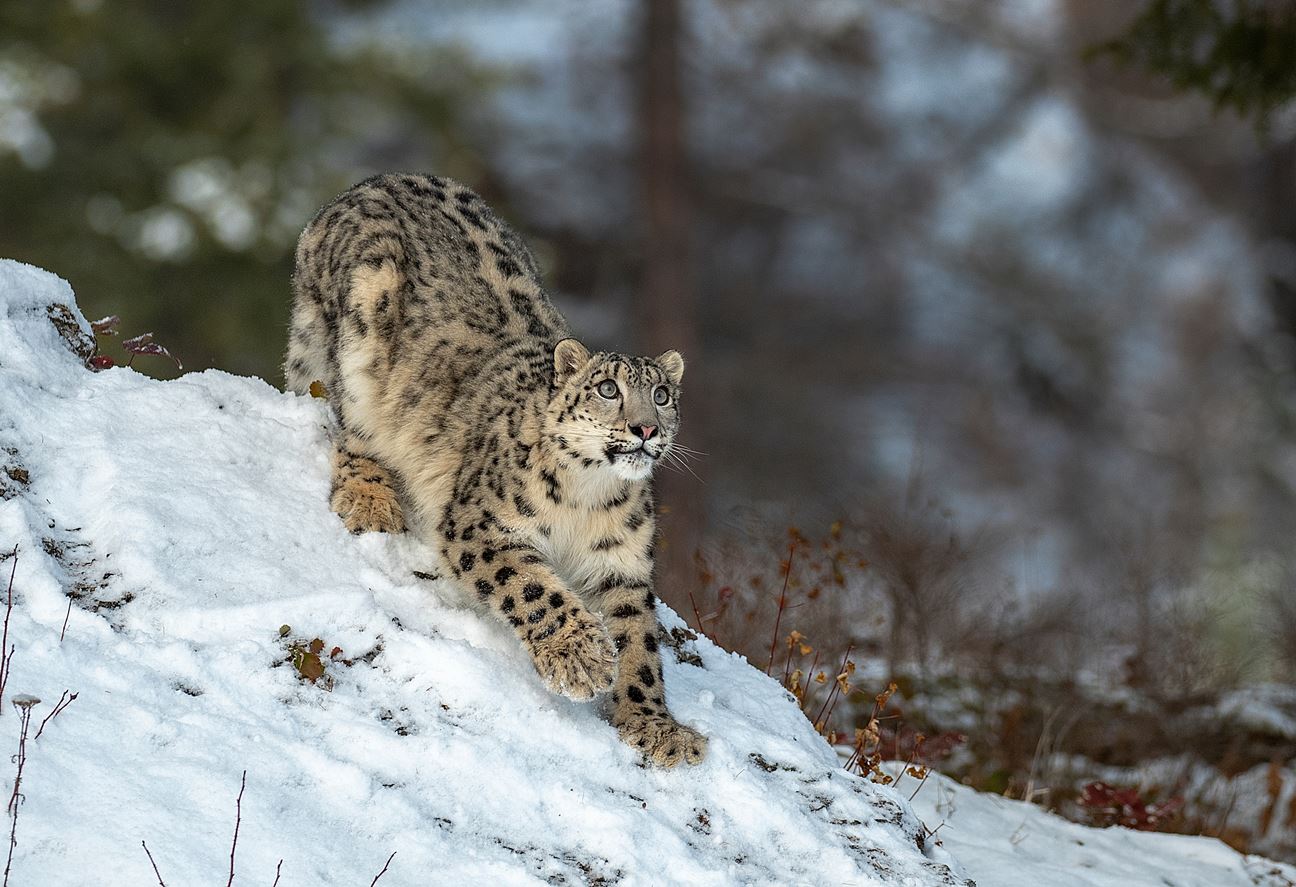
Himalayan Snow Leopard on the hunt
The Great Himalayan National Park Conservation Area, or simply GHNP, is situated in the Kullu district of Himachal Pradesh. While alpine meadows and dramatic landscapes dominate the major part of the park, did you know it also houses twenty-five types of forests? One can only anticipate the rich assemblage of faunal species that live here. Here are some not-so-common mammals that live in the GHNP:
- Blue Sheep: Locally known as bharal, Blue Sheep are wild mountain goats that prefer steeply slopes from 3500 metres upwards! Bharals are neither blue nor are they sheep, but resemble goats. They live in herds of 5-10 and mostly eat alpine shrubs and forbs.
- Himalayan Brown Bear: Did you know the Himalayan Brown Bear is the largest land carnivore in India? They usually eat a vegetarian diet consisting of plant matter, but some kill and eat sheep, goats, or ponies. While females can weigh between 150-175 kilograms, males weigh a whopping 250 kilograms!
- Snow Leopard: These are some of the most beautiful cats in the Himalayas. Their coats have rosettes that are unique to each individual. Regular sightings are reported in the Pin Valley National Park. Masters of disguise, snow leopards live in cold mountains and montane grasslands and can jump up to 6 metres vertically and 15 metres horizontally!
- Himalayan Tahr: These wacky-looking animals live in the bitterly cold Himalayan habitat. Himalayan tahrs are born to climb and spend their summer grazing at high altitudes, while winters are spent at lower altitudes. Their hooves are the most impressive: the ones that can grip onto rocks and wedge into footholds, thus helping them climb.
- Musk Deer: Also called the white-bellied musk deer, these are solitary animals that are best known for the scented musk. A gland in their abdominal region produces pellets of a black substance that is used as a perfume fixative for years!
Some other animals found in the Great Himalayan National Park Conservation Area include the Barking Deer, Serow, Asiatic Black Bear, and the Himalayan Ghoral.
Kaziranga National Park
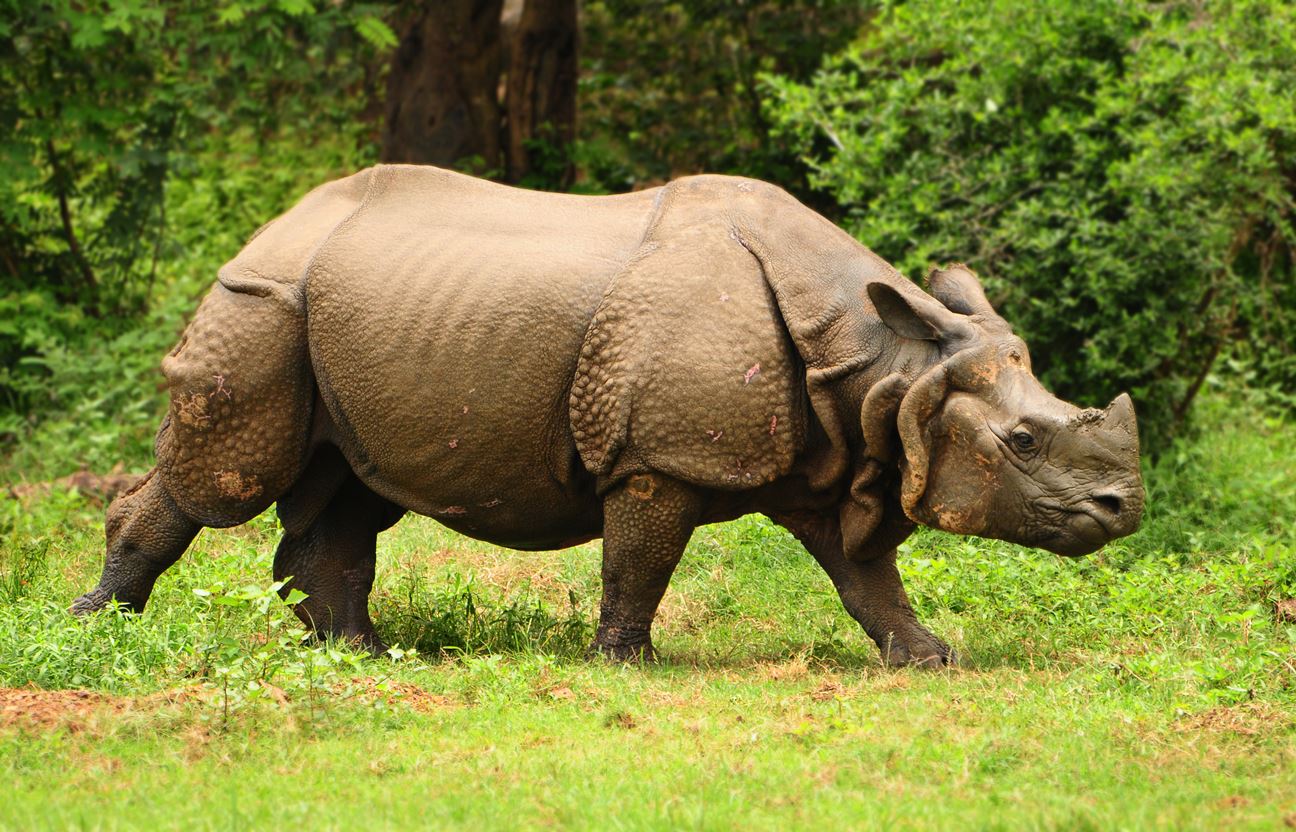
Great Indian one-horned rhinoceros at Kaziranga national park
We all know Kaziranga is practically synonymous with the one-horned rhinoceroses! And rightly so. Over 90% of the greater-one horned rhinos live in Assam’s Kaziranga National Park. The park’s contribution in saving the one-horned rhinoceros from extinction has won it the title of one of the best wildlife refuges in the world. The tall alluvial wet grasslands are home to many rare animals like the ones listed here:
- Indian Rhinoceros: The Kaziranga National Park is home to two-thirds of the entire one-horned rhino population from around the world. This mega-herbivore is also known as the greater one-horned rhino. Unfortunately, these rhinos are one of the most poached animals in India. Their horn, which is made of keratin, is known to have magical medicinal properties.
- Indian Elephant: More than 50% of the total Indian Elephants live in Assam’s Kaziranga National Park. These elephant herds are headed by a matriarch who also is the oldest and often largest female elephant of the herd. Each year, the park organises the Kaziranga Elephant Festival together with the Tourism Department of Assam.
- Bengal Tiger: The Royal Bengal Tiger is the national animal of India and is concentrated in the Agoratoli Safari zone inside Kaziranga. This park is also known to have the highest density of the Royal Bengal Tigers in the world. This tiger’s roar can be heard from 2 kilometres away!
- Wild Water Buffalo: The Indian Wild Water Buffalos are found only in Assam. While a fully grown water buffalo can weigh over one ton, today only a few thousand remain in Kaziranga National Park.
- Swamp Deer: Also called the Barasingha, Swamp Deer is one of the largest species of deer found in India. They are known for their twelve distinctive tined stags. In Kaziranga, the Barasinghas can be spotted grazing during both the day and the night. This park is also the largest breeding ground for swamp deer in India.
Keoladeo National Park
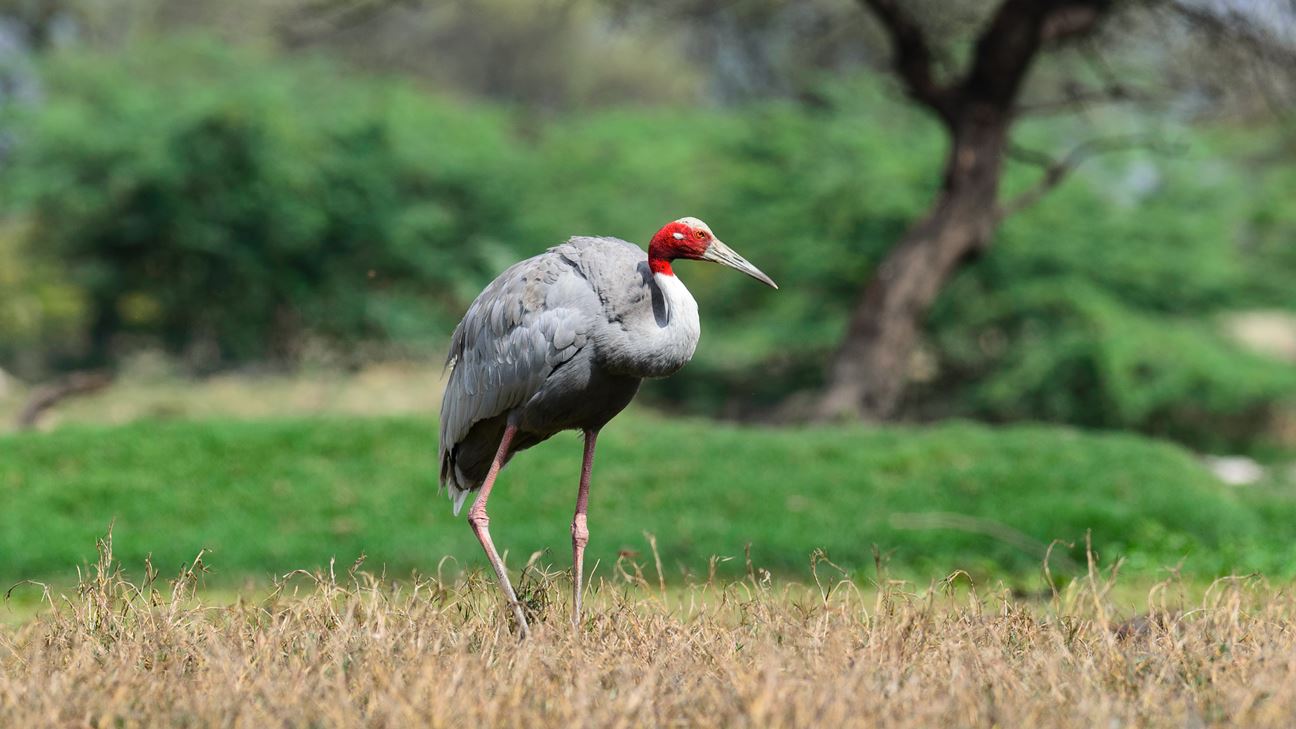
Sarus crane bird (Grus Antigone) in Bharatpur bird sanctuary
Keoladeo National Park or the Keoladeo Ghana National Park was formerly and famously known as Bharatpur Bird Sanctuary. Situated in the northwestern Rajasthan, between the cities of Jaipur and Agra, this park is home to the rare Siberian Cranes. These cranes are critically endangered species of crane and migrate from Serbia to India to spend winter months here. Each year, thousands of these migratory waterfowl visit Keoladeo National Park to breed.
The sanctuary dates back to almost 250 years and was used for waterfowl hunting by the maharajas of Rajasthan. It was only in 1985 that this area was converted into a national park. Waterfowl such as herons, storks, and cormorants are among the 370 bird species that live here. The spectacular courtship dance of the Sarus Crane is worth watching. 27 species of mammalian fauna also live at Keoladeo National Park, including Rhesus Macaque, Nilgai, Blackbuck, Indian Porcupine, Asian Palm Civet, Bengal Fox, and Striped Hyena among others.
Keoladeo Ghana National Park attracts many tourists, especially bird-watchers, each year. Luxury train Palace on Wheels has this park as a part of its itinerary.
Manas Wildlife Sanctuary
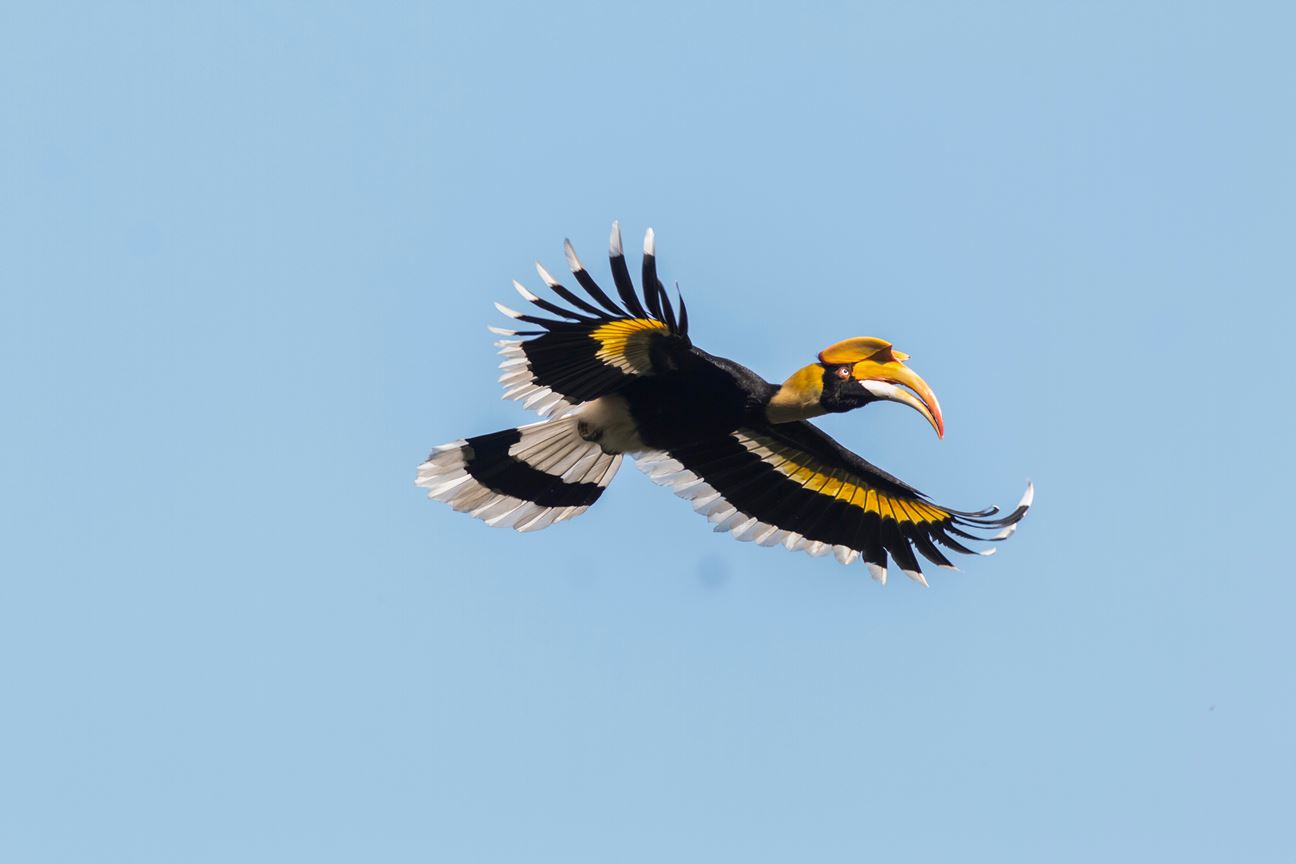
A great hornbill flying over the skies of Manas National Park
The Manas Wildlife Sanctuary in Assam remains one of the most significant biodiversity hotspots in India where many threatened species continue to live even today. The park is made up of two significant biomes: grasslands and forests. Together, they house some of the rarest animals in India, including:
- Pygmy Hog: These are the world's smallest wild pigs. Pygmy hogs live along the Himalayan foothills in the tall and wet grassland habitats. Once found in Nepal and Bhutan, the population declined to just a few hundred by 1993. They were only found in a few small areas of Assam's Manas National Park and were almost on the brink of extinction. In June 2021, Indian conservationists released 12 Pygmy Hogs in Manas National Park as a part of a rehabilitation project.
- Bengal Florican: Bengal Florican is one of the rarest bustards and is mainly found in the Indian subcontinent, Cambodia, and Vietnam. Adult floricans have long lanky crests and slim necks, and females are mostly larger than males. Their courtship dance is one of the most romantic with male bustards attracting female partners by displaying their bioluminescent bellies. In India, some 40 Bengal Floricans are found in the Manas Wildlife Sanctuary and are today critically endangered.
- Great Hornbill: The Great Indian Hornbill or Great Pied Hornbill is one beautiful, brightly coloured bird. These large-headed birds have slightly thinner necks, but a very sizable bill called the casque. Of all the hornbill species found in India, this one is the largest. As an act of marking territory, male hornbills are seen butting their casques.
- Malayan Giant Squirrel: The Malayan Giant Squirrel or the Black Giant Squirrel is a beautiful black tree squirrel with a long, bushy tail. This is among the world's largest squirrels and can weigh a little over a kilogram. They have a distinctive dark upper body and pale underparts and are predominantly found along the Indo-Malayan belt. In India, one can spot Malayan Giant Squirrels at a few protected areas in Assam, particularly at Manas Wildlife Sanctuary.
The Chinese Pangolins, Greater One-Horned Rhino, Bengal Tigers, Slow Loris, and Capped Langur can also be spotted at the Manas Wildlife Sanctuary.
Nanda Devi and Valley of Flowers National Parks
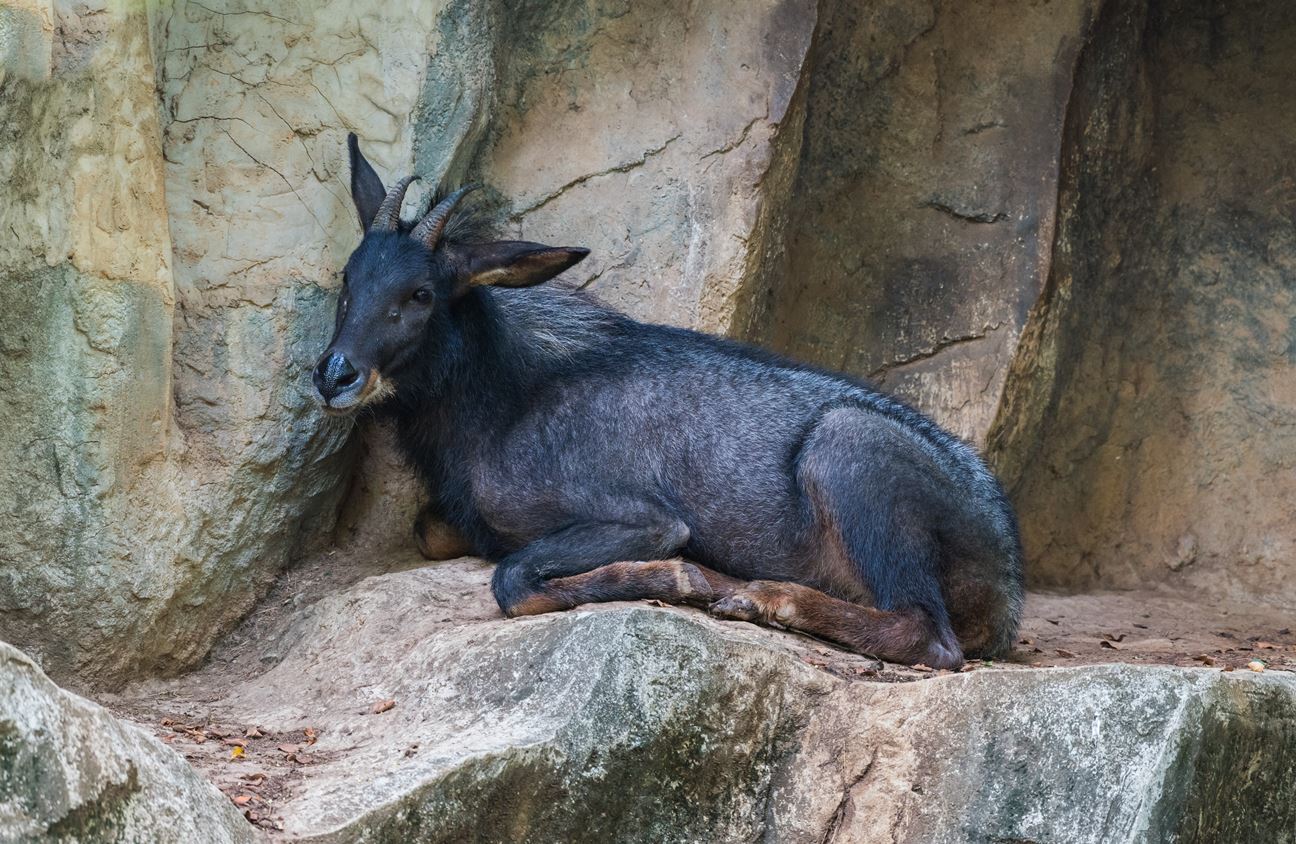
Serow sitting on the high cliff edge
Nestled high in the western Himalayas, the Valley of Flowers National Park and Nanda Devi National Park together make up for a transition zone between two unique mountain ranges: the Zanskar and Great Himalaya. Thanks to its inaccessible mountainous terrain, these sites remain well preserved. Both parks contain a high density of fauna that is indigenous to the west Himalayan biogeographic zone. Globally threatened species like the Snow Leopard and Himalayan Musk Deer are well-preserved here. Mountain ungulates and galliformes are also plenty here. Mainland Serow, Himalayan Tahr, Himalayan Black Bear, Northern Plains Gray Langur, Red Giant Flying Squirrel, Himalayan Weasel, and Indian Spotted Chevrotain are spotted here. Birds like Scaly-Bellied and Yellow-Nape Woodpeckers, Great and Blue-Throated Barbets, Snow Pigeon, and Spotted Doves also are spotted here.
Sundarban National Park
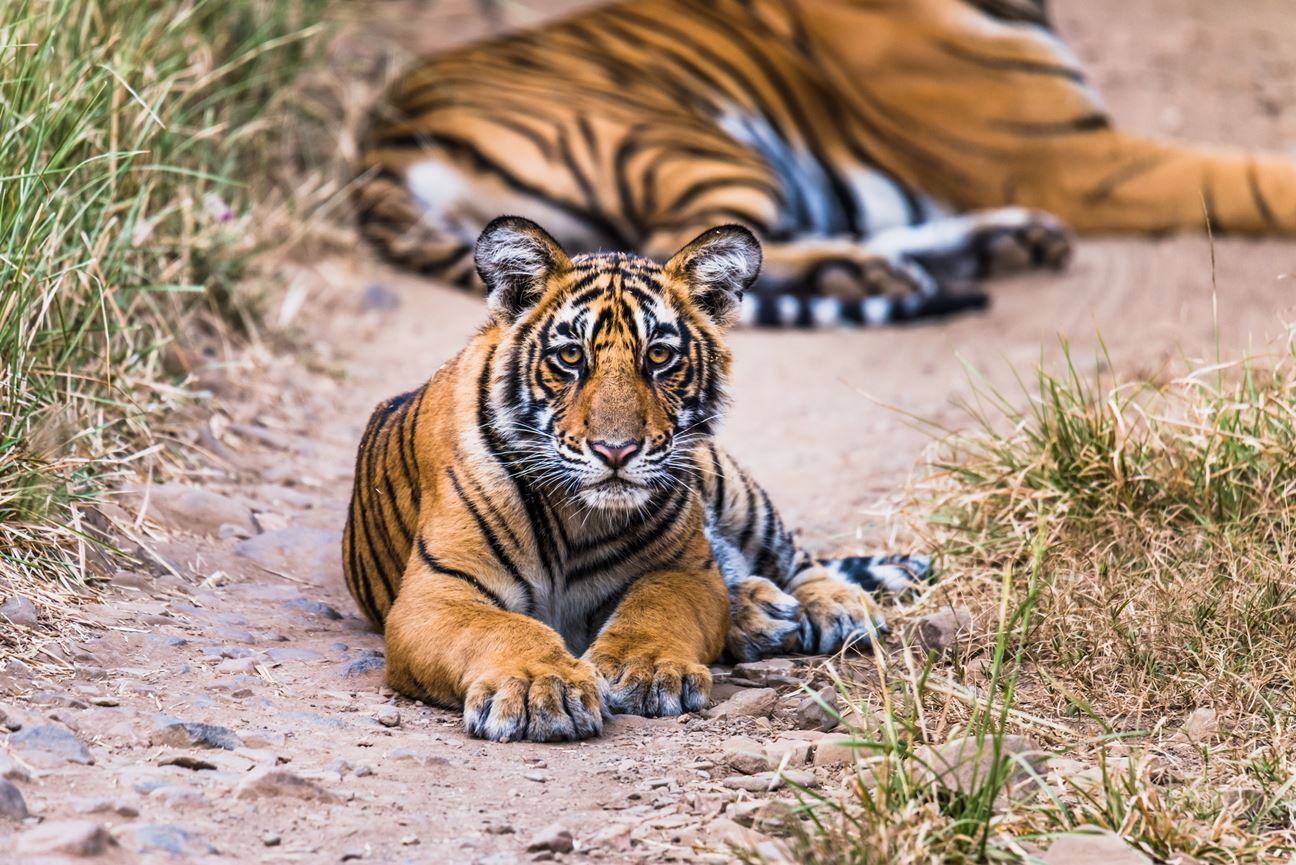
little cub of the Royal Bengal Tiger sitting with his mother
India and Bangladesh’s Sundarban is the largest delta in the world and comprises over 10,000 square kilometres of mangrove forest. The forest that lies on the Indian side is called the Sundarban National Park. The abundance of Sundari trees in the area is how the forest got its name. The Sundarbans harbour many rare and globally threatened animals, including its most famous resident, the Bengal Tiger. Other animals include Freshwater Crocodile, Water Monitor Lizard, Fishing Cat, Gangetic Dolphin, Snubfin Dolphin, Olive Ridley Turtle, and Hawksbill Turtle among others.
Western Ghats
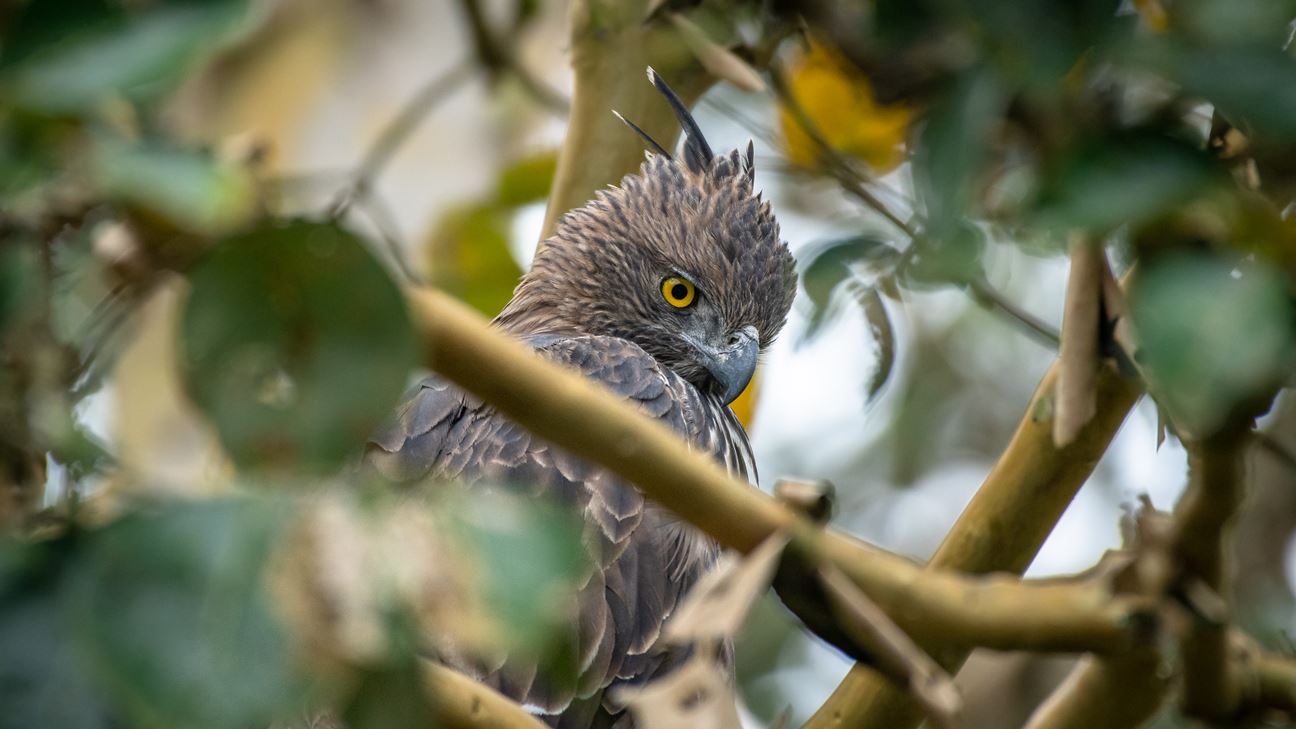
Crested hawk-eagle at Nagarhole National Park
The rainforest of the Western Ghats is home to some of the most magnificent animals in India, including over 300 globally threatened species. The region is sometimes called the Great Escarpment of India and runs parallel to India’s west coast. Here, expect to see:
- Black Panther: These are a type of leopards with a melanistic colour variant. The Mhadei Wildlife Sanctuary of Goa in the Western Ghat is considered a global biodiversity hotspot for the rare black panther.
- Indian Leopard: Indian Leopards are amongst the five big cats found in India. The Western Ghats are a potential stronghold for Indian Leopards who are primarily found in Karnataka and Kerala. Their characteristic dark stripe lining along the head runs along their spine.
- Indian Bison: The Gaur or Indian bison is the largest bovine found in India. Both sexes have horns and a prominent ridge on their back. While a female bison can weigh between 500 and 1000 kilograms, an average male Indian bison weighs 1500 kilograms.
- Lion Tailed Macaque: The Lion-Tailed Macaques are found in the Valparai plateau in the Anaimalai Hills. They have a distinctive grey mane around their face which has also earned the name of bearded monkeys.
- Crested Hawk Eagle: The Crested Hawk Eagle is a powerful raptor and is also known as the changeable hawk-eagle due to its plumage variations. This eagle is found in peninsular India, and its distinctive screeching call can easily make the raptor known!
As you can see, several rare and endangered species live in India. While deforestation and habitat loss have been the number one contributing factor for the decline in their population, let us all strive to educate and support ways so that these protected areas not only thrive but also remain biologically the most productive for the rare animals that live in India.